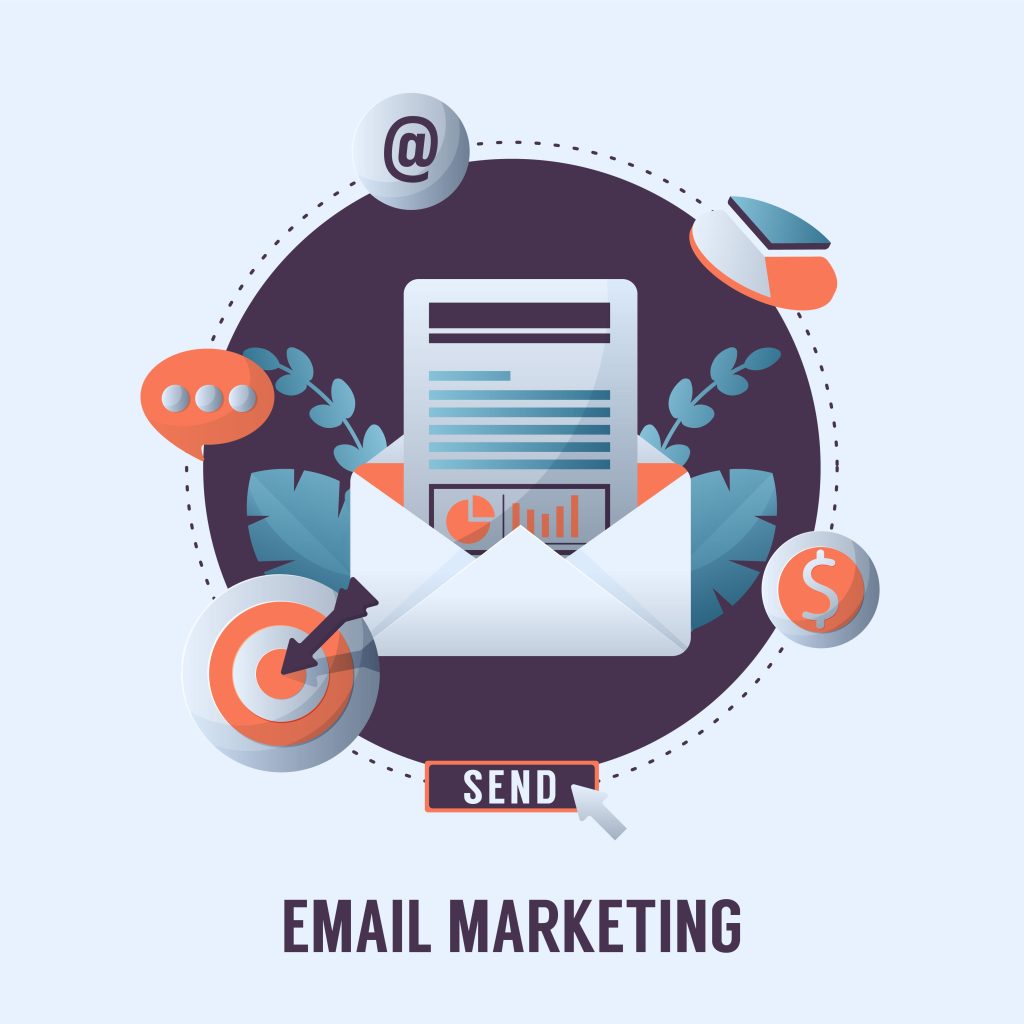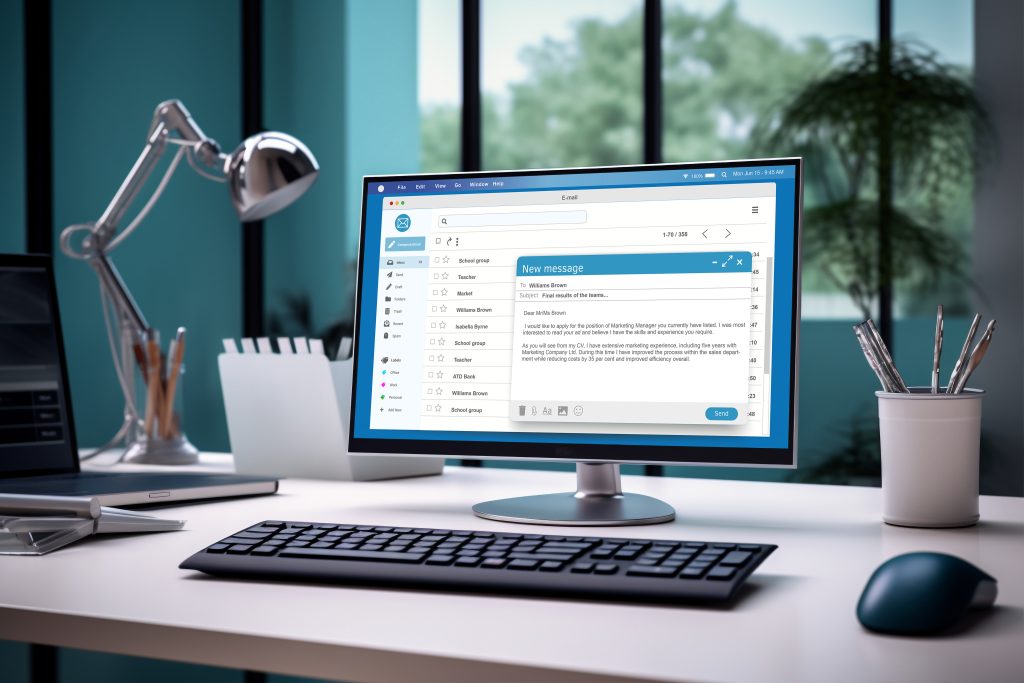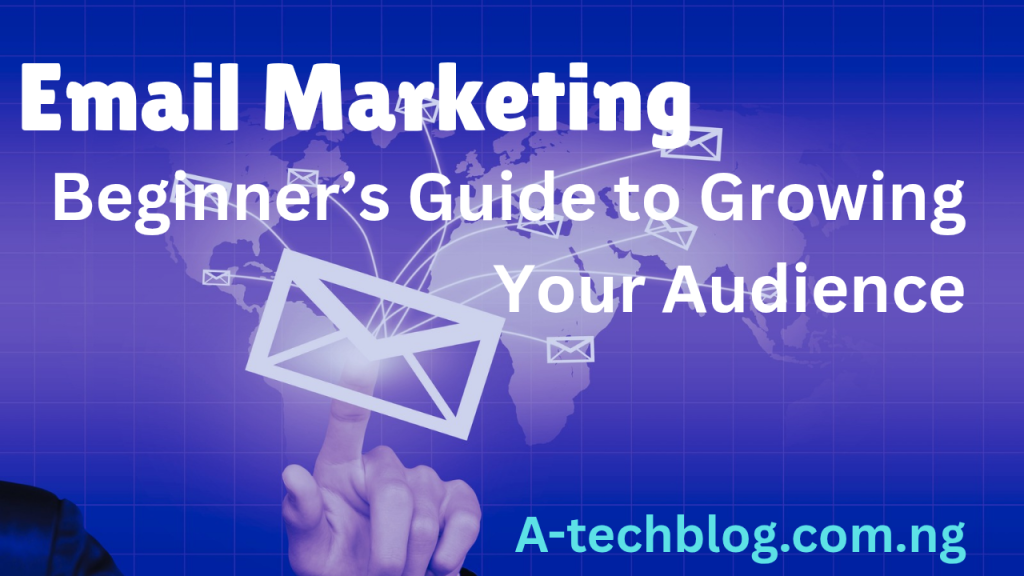Learn how to start email marketing with this beginner’s guide. Discover step-by-step to build your list, engage your audience, and increase sales effectively.
Email marketing is one of the most effective ways to connect with your audience and drive sales. If you’re new to it, learning how to start email marketing can help you build strong customer relationships, promote your products, and grow your brand. In this beginner’s guide, you’ll discover the essential steps—from choosing the right email platform to building a subscriber list and crafting compelling messages that convert. Start today and unlock the power of email to boost your business.
What Is Email Marketing ?
Email marketing is a powerful digital marketing strategy that involves sending targeted emails to a group of subscribers to promote products, share updates, or build relationships. It allows businesses to connect directly with their audience, deliver personalized content, and drive traffic and sales. With the right approach, Email Marketing can boost engagement, increase brand loyalty, and offer one of the highest returns on investment among online marketing channels. Whether you’re a small business or a large brand, Email Marketing remains essential for growth and communication.

Importance of Email Marketing
1. Direct Communication with Customers
Email marketing gives businesses a direct and personal way to reach their audience. Unlike social media where algorithms control visibility, emails land straight in the subscriber’s inbox, ensuring your message is seen.2. Cost-Effective Marketing Strategy
Compared to other marketing channels like paid ads or print media, email marketing is incredibly affordable. With minimal investment, you can reach thousands of customers and get impressive returns.3. Boosts Customer Engagement
By sending regular updates, newsletters, and personalized content, you keep your audience engaged and interested in your brand, leading to higher interaction rates.4. Increases Website Traffic
Emails can include links to your website, blog posts, or landing pages. This not only boosts your website traffic but also encourages users to explore your products or services further.5. Improves Customer Retention
Staying in touch with your customers through email helps build loyalty. Consistent communication ensures they remember your brand and are more likely to return for future purchases.6. Personalized Marketing
Email platforms allow you to segment your audience and send personalized content based on interests, behaviors, and demographics, which increases the chance of conversion.7. Measurable Results
Email marketing provides clear analytics like open rates, click-through rates, bounce rates, and conversions. These insights help you understand what works and improve future campaigns.8. Supports Other Marketing Channels
Emails can reinforce your other marketing efforts by promoting social media posts, blog content, or special campaigns, creating a cohesive brand experience.9. Builds Brand Awareness
Regular communication keeps your brand top-of-mind. When customers receive valuable content from you consistently, they’re more likely to recognize and trust your brand.10. Enhances Lead Generation
Email marketing helps you capture leads through sign-up forms, landing pages, or gated content. These leads can then be nurtured into loyal customers.11. Automates Customer Journeys
Automation tools let you send emails based on user actions, like welcome emails, birthday offers, or cart abandonment reminders—saving time and improving user experience.12. Promotes Products and Services
Email is a powerful channel to announce new products, sales, or updates. Promotional emails can drive immediate action and boost sales quickly.13. Encourages Customer Feedback
You can use email campaigns to ask for reviews, testimonials, or survey responses, which help you improve your services and build social proof.14. Segmented Campaigns for Better Results
Segmenting your email list ensures the right message reaches the right people. Tailored content increases relevance, engagement, and conversion rates.15. Increases Sales and Revenue
Email marketing directly contributes to sales by nurturing leads, reminding customers of offers, and encouraging repeat purchases, leading to sustained business growth.
Benefits of Email Marketing
Email marketing offers powerful benefits that make it an essential tool for businesses of all sizes. It allows you to connect directly with your audience, deliver personalized messages, and build long-lasting customer relationships. With its low cost and high return on investment, email marketing helps drive traffic, increase conversions, and boost sales. It’s also easy to track and measure, giving you insights into open rates, clicks, and user behavior. From promoting new products to nurturing leads and encouraging repeat purchases, email marketing remains one of the most effective and reliable digital marketing strategies available today.
Setting Up Your Email Marketing Strategies

Understanding Your Target Audience
Understanding your target audience is the foundation of any successful email marketing strategy. By identifying who your ideal customers are—their needs, preferences, behaviors, and pain points—you can create highly personalized and relevant email campaigns that truly resonate. Knowing your audience helps you tailor your messaging, offers, and content to meet their specific interests, increasing engagement and conversion rates. It also allows you to segment your email list effectively, ensuring each subscriber receives the right message at the right time.Choosing the Right Email Marketing Platform
Choosing the right email marketing platform is crucial for the success of your campaigns. The right platform should offer user-friendly features like customizable templates, list management, automation, and detailed analytics to help you create, send, and track your emails effectively. It should also integrate seamlessly with your existing tools, such as CRM systems or eCommerce platforms. Additionally, consider factors like pricing, scalability, deliverability rates, and customer support when making your choice. Selecting the best email marketing platform ensures you can engage your audience efficiently, optimize campaign performance, and grow your business with ease.Building and Growing Your Email List
Building and growing your email list is a vital step in establishing a successful email marketing strategy. A strong, engaged subscriber list allows you to reach the right audience with personalized messages that drive conversions. To grow your list effectively, use lead magnets such as free guides, discounts, or exclusive content to encourage sign-ups. Incorporate clear and compelling signup forms on your website, blog, and social media channels to capture visitor information. Consistently delivering valuable content keeps subscribers engaged and reduces unsubscribes, helping your list grow organically over time. A well-maintained and growing email list is key to expanding your reach and boosting your business success.Creating a Lead Magnet That Converts
Creating a lead magnet that converts is essential for attracting quality subscribers to your email list. A lead magnet is a valuable free offer—such as an eBook, checklist, discount code, or webinar—given in exchange for a visitor’s email address. To be effective, it should solve a specific problem, deliver quick value, and be tailored to your target audience’s needs. The more relevant and helpful your lead magnet is, the higher your conversion rates will be. Use compelling headlines, clear calls-to-action, and visually appealing landing pages to promote your lead magnet. When done right, a strong lead magnet boosts email sign-ups and helps build a loyal, engaged audience.Segmenting Your Email List for Better Results
Segmenting your email list for better results is a powerful strategy that can significantly improve your email marketing performance. By dividing your subscribers into specific groups based on factors like interests, behavior, location, or purchase history, you can send more personalized and relevant content. This targeted approach increases open rates, click-through rates, and conversions, while reducing unsubscribes and spam complaints. Segmentation allows you to tailor your messaging to meet each subscriber’s unique needs, making them feel valued and understood. Whether you’re sending promotions, updates, or newsletters,Crafting High-Converting Email Content
Crafting high-converting email content is key to the success of any email marketing campaign. Your content should grab attention with a compelling subject line, followed by a clear and engaging message that speaks directly to your audience’s needs or interests. Focus on delivering value, whether it’s through helpful tips, special offers, or product updates. Use a conversational tone, strong call-to-action (CTA), and visually appealing formatting to guide readers toward your desired goal—whether it’s making a purchase, signing up, or clicking a link. High-converting email content not only boosts engagement and click-through rates but also builds trust and drives long-term customer loyalty.Designing Mobile-Friendly and Engaging Email Templates
Designing mobile-friendly and engaging email templates is essential in today’s digital world, where most users check emails on their smartphones. A responsive email design ensures your content looks great and functions properly on all screen sizes, improving user experience and increasing engagement. Use a clean layout, easy-to-read fonts, and well-spaced elements to make your emails visually appealing and scannable. Incorporate eye-catching images, clear call-to-action buttons, and minimal text to keep readers interested and drive clicks. A mobile-optimized and engaging email template not only boosts open and click-through rates but also enhances your brand’s professionalism and credibility.Setting Up Email Automation and Workflows
Setting up email automation and workflows is a smart way to streamline your email marketing and boost efficiency. With automation, you can send timely and personalized emails based on user actions—such as welcome emails, abandoned cart reminders, follow-ups, and birthday offers—without manual effort. Workflows allow you to nurture leads, onboard new subscribers, and engage customers throughout their journey. By automating repetitive tasks, you save time while ensuring consistent communication and increased engagement. Email automation not only improves user experience but also helps drive more conversions, making it a powerful tool for growing your business and maximizing marketing results.A/B Testing Your Email Campaigns
A/B testing your email campaigns is a powerful strategy to optimize performance and improve results. By testing two or more variations of your emails—such as subject lines, call-to-action buttons, images, or content—you can see what resonates best with your audience. A/B testing helps you make data-driven decisions that increase open rates, click-through rates, and conversions. It also allows you to better understand subscriber behavior and preferences, leading to more effective future campaigns. Consistently testing and refining your email elements ensures continuous improvement, helping you achieve better engagement and maximize the success of your email marketing efforts.Complying with Email Marketing Regulations
Complying with email marketing regulations is essential for protecting your business and building trust with your audience. Laws such as GDPR, CAN-SPAM, and other data privacy regulations require businesses to follow specific rules, like obtaining consent before sending emails, providing clear opt-out options, and including sender information. Following these regulations ensures your emails are legally compliant, reduces the risk of fines, and improves email deliverability by avoiding spam filters. By respecting your subscribers’ privacy and being transparent in your communication, you enhance your brand’s reputation and create a safer, more reliable email marketing experience.Tracking and Analyzing Campaign Performance
Tracking and analyzing campaign performance is essential for improving your email marketing results. By monitoring key metrics such as open rates, click-through rates, bounce rates, and conversions, you gain valuable insights into how your audience interacts with your emails. These analytics help you identify what’s working, what needs improvement, and how to refine future campaigns for better engagement. Tracking performance also allows you to test subject lines, content, and send times to optimize results. With data-driven decisions, you can increase ROI, boost subscriber satisfaction, and ensure your email marketing strategy continues to deliver measurable success.Timing and Frequency of Your Emails
Determine the best time and how often to send emails without annoying your audience.Integrating Email with Your Overall Marketing Strategy
Integrating email with your overall marketing strategy creates a unified and powerful approach to reaching your business goals. Email marketing works best when aligned with other channels like social media, content marketing, SEO, and paid advertising. By combining efforts, you can deliver consistent messaging, reinforce brand awareness, and guide customers through a seamless journey—from awareness to conversion. For example, you can use email to promote blog posts, share social media updates, or retarget website visitors with personalized offers. This integrated approach improves engagement, maximizes ROI, and ensures that every marketing channel supports and strengthens the others for better results.Maintaining Email List Health and Deliverability
Maintaining email list health and deliverability is crucial for the success of your email marketing campaigns. A clean, well-maintained list ensures your emails reach the inbox instead of being marked as spam or bounced. Regularly remove inactive subscribers, correct invalid email addresses, and avoid purchasing email lists to keep your list quality high. Use double opt-ins to verify subscribers and ensure you’re emailing people who genuinely want to hear from you. Good list hygiene improves open rates, click-through rates, and sender reputation, while boosting overall campaign performance. By maintaining a healthy email list, you ensure maximum deliverability and long-term email marketing success.


